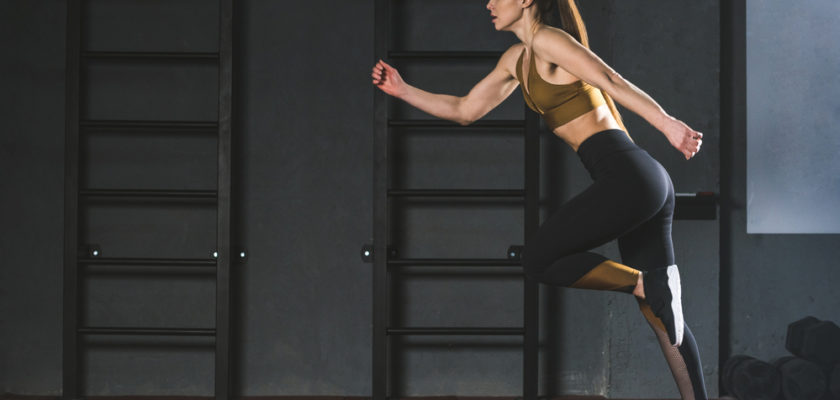HIIT workouts are incredibly effective. HIIT stands for High-Intensity Interval Training. HIIT is classed as short periods of 100% effort mixed in with rest and recovery.
It’s one of the fastest ways to workout. It is also fun, varied and gives you more benefits than you can count using both of your hands. HIIT workouts can be applied to almost any exercise. There is a range of timing ratios (intensity vs recovery) that can be used – all of which give you a more powerful heart.
Your heart is one of the most important organs in your body, here’s how you supercharge it.
15 Benefits of HIIT Workouts
1 – Boosts Aerobic Fitness

Aerobic (meaning “requiring air”) fitness is one of the most important elements of being healthy. It stands for your body’s ability to use oxygen to produce energy for your muscles. It’s often measured by VO2 max (or maximal oxygen consumption). In one study, 112 participants were divided up into three groups depending on a given exercise intensity as follows:
- <88% / 88-92% / >92%
The study tried to find out whether higher intensity during exercise gives a better increase in VO2 max (which would mean a more effective aerobic system).
So what did the researchers find? Those with the highest intensity of exercise experienced the best increase in VO2 max [1].
To sum up, HIIT will give you a more powerful heart. This will also decrease your risk of cardiovascular disease, stroke, diabetes and high blood pressure. If you were to try and maximize your VO2 max, it’s the same as engineering a Bugatti engine into your day to day car.
2 – Boosts Anaerobic Fitness

Aerobic fitness is great for running marathons and ensuring you don’t get tired easily. Anaerobic fitness (or “not requiring air”) is your body’s ability to complete tasks without relying on oxygen, e.g. whilst completing high intensity activities such as sprints.
It is also proven that working in your anaerobic zone (the type of exercise that’s like sprinting away from a ravenous grizzly bear) produces extreme results.
One study conducted in 2006 asked individuals to complete a HIIT program over 8 weeks. They found that participants of the study could cycle for twice as long at the same pace as they could before their HIIT training commenced [2].
Think about this in numbers. This means that if someone was able to run 10k in 50 minutes, they would be able to run 20k at the same pace. This would result in a time of 1 hour 40 minutes after 8 weeks of HIIT training, not bad.
3 – Burns More Fat
Mike Robertson, MS, CSCS & co-owner of IFAST gym in Indianapolis states “If you’re trying to lose fat, it’s pretty clear that HIIT is a more effective tool than lost-distance cardio”.
One study conducted at East Tennessee State University also found impressive results. People who performed HIIT workouts for 8 weeks lost 2% of their body fat compared to 0% for people following their regular routine.

You also burn more calories at rest for up to 48 hours after you’ve worked out due to EPOC [3]. EPOC (excess post-exercise oxygen consumption), or the “afterburn effect” is what happens to the body after HIIT.
This works as fatty acids are released to used as fuel for recovery. When this happens your body can get rid of the oxygen debt built through exercise.
Burning more calories whilst not exercising you say? Sign me up.
4 – Saves Time
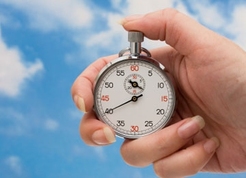
HIIT is easy, and you can have all the benefits in less than 30 minutes. A study in the Journal of Physiology found that completing HIIT sessions gives you all the benefits of steady state cardio but in a fraction of the time.
It’s also been proven that a HIIT workout lasting just 30 minutes can have exactly the same benefits (if not more) when compared to 90 minutes of low intensity exercise [4].
Even if you only have 20 minutes or less to workout, ramp up the intensity and watch the results build up.
Alternatively, if you only have 2 hours a week to exercise, why not switch it up? Rather than do 4 30 minute steady runs, you could switch your routine and complete 4 30 minute sessions of HIIT. This will give you faster adaptations and therefore results in the same amount of time.
Either way, HIIT proves itself to be the king of efficiency. It allows you to both achieve greater results and also spend more time on other areas of life you enjoy.
5 – Boosts Hormones
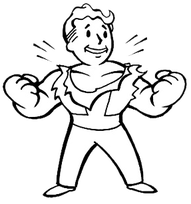
Hormones are the little chemical signals in your body that can have profound results. When you’ve approached 85 – 95% of your VO2 max during HIIT, your body gets a rush of valuable hormones. This includes growth hormone, testosterone, endorphins, adrenaline and aldosterone all start to be released into the body [5].
(How do you know if you’re working that hard? Feeling as if you’re heart is going to explode is usually a good signal in this regard. However, if you feel like your heart is going to explode whilst your watching the news, it’s time for a visit to the doctor!)
These hormones will all contribute to cell growth, increases in muscle mass, feelings of happiness, feelings of being ready for anything and your blood pumping faster (respectively). Why not add some coconut oil and compound exercises to your HIIT routine? This can boost your hormones even further!
When completing exercise of a really high intensity your body freaks out. It’s this adrenaline rush which brings in your personal engineers to ensure you adapt ready for next time.
6 – Removes Metabolic Waste More Effectively
Metabolic waste is the term for the waste products built up in the body from exercise. HIIT trains the body to remove metabolic waste during the rest period between intervals. This means that your body can recover quicker from periods of high intensity and therefore complete more work in the same given period of time [6].
7 – No Gym Membership or Equipment Necessary
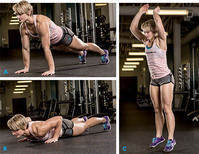
You really can get an effective cardiovascular workout anywhere. Even if you’re on holiday, travelling in hotels or in your home living room.
HIIT workouts that focus on using your own body weight can be extremely effective wherever they are completed. Try press ups, burpees, squat jumps and thrusters.
Don’t believe us? Do as many chest-to-floor burpees with a squat jump as you can in 1 minute.
Or if you’re keen to build strength – try these exercises in 40 second intervals.
8 – Preserves Muscle

The traditional view of someone who competes in long distance races is usually a lean, yet really skinny person. You might think they look like they struggle to carry their shopping back from the supermarket.
Compare this to a sprinter and you’re much more likely to think of a lean, yet more muscular person, for example Usain Bolt.
These stereotypes are somewhat categorized by the type of training completed to compete in such events. Long distance running is typically deemed “catabolic” (i.e. muscle wasting). Sprinting and other high intensity activities are often referred to as “anabolic” (i.e. muscle preserving or building) [7].
This makes HIIT a popular choice for obvious reasons. No need to fear developing a stick-man physique, losing physical strength or hard earned muscle.
Due to it’s efficiency at increasing endurance, you may also want to make it a part of your long distance training plan. This will not only improve your PB, but help you look considerably stronger as you power to the finishing line.
9 – Improves Sport Performance

Due to the way the body adapts, the form of exercise chosen is usually a great indicator for the way that your body will improve over time.
If you complete lots of strength work with low repetitions and heavy weights, you’re going to get really strong when using heavy weight and low repetitions.
If you’re completing lots of steady miles as part of a training for a marathon. You’re going to get much better at pounding out lots of miles in a given period.
With HIIT you’re doing both easier periods of exercise during your rest intervals and periods of high intensity. Here’s where HIIT really shines, you’ll improve the capacity to do both!
This is extremely useful for many sports. Whether it’s sprinting forward to catch a pass in American Football, or charging forward on the basketball pitch after a rebound.
The applications to sport are as varied as the amount of sports themselves. HIIT can ensure you get that competitive edge to excel in whichever sport you play.
10 – Boosts Fast-Twitch Muscle Fibers

With regards to your muscles, they can usually be categorized into two main groups, fast twitch and slow twitch. (There are also “intermediate fibres” which are classified as Type 2a, but for the sake of simplicity, we’ll just consider the fast & slow).
Slow twitch muscle fibres are the types of muscles used in long steady state cardio. For example whilst completing an endurance event like a marathon.
They are capable of keeping you doing at a steady pace for a long time and are more resistant to getting tired (great if you’ve got a triathlon to complete). Consider these the “wood burning” type of muscle. They aren’t going to blow up your house, but are great as a campfire to keep you warm through the night.
There are also fast-twitch fibres, which are responsible for short bursts of power. These muscles are used during sprints and other short-burst activities such as powerlifting. However fast-twitch muscle fibres tire easily. Think of these as your “dynamite” type of muscle. They aren’t what you’d pick to keep you warm in the Arctic, but could help you burst through a brick wall if needed.
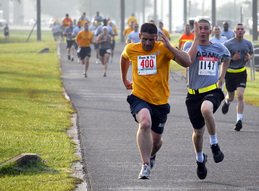
The benefits of fast twitch muscles fibres should be easy to see in a wide variety of sports. They make you go faster, hit harder and jump higher. They help you to secure that millisecond competitive advantage when you need it most.
But what if you’re an endurance athlete and heading out for a two hour (or more) race is more your cup of tea?
One excellent consideration is that fast-twitch muscle fibres join in to help when your slow-twitch muscle fibres begin to tire. This helps you maintain form, contributing to your overall endurance. You can even use them to complete an obligatory sprint finish for the cheering crowds.
For any endurance event, it’s great to have both. If you’re competing for a marathon, triathlon, or any other endurance event, your weekly routine should have plenty of long sessions. Ideally not more than 2.5 hours. After this point the aerobic benefits you’re looking to develop begin to decline rather than continue to improve [8].
In addition to long sessions you should also incorporate a session of HIIT per week. This not only gives you the strength to push through those last few miles, but also as a booster to your overall aerobic capacity. This way you’ll have excellent endurance and also improvements in speed. Who ever said you can’t have the best of both worlds?
11 – Improves Blood Pressure
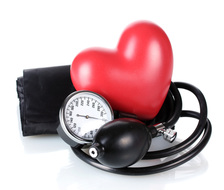
High blood pressure is not good. Otherwise known as “hypertension”. It increases your risk of a range of undesirable events including heart attacks and stroke. Not ideal.
It affects roughly 31% of Americans, costing the country an incredible $47.5 billion a year. Resting heart rate is also one of the most important predictors of cardiovascular disease.
Blood pressure is such a significant problem in society. We’re fortunate that there’s lots of research identifying ways to improve blood pressure. Therefore we’re steps closer to making people significantly healthier. Unsurprisingly HIIT has been shown to be particularly effective.
Even when compared versus standard steady state cardio (i.e. heading for a 20 + minute run at the same pace), HIIT reigns supreme. Eat a pescatarian diet and you’ll improve your heart health even further.
One study which studied this comparison, based on participants with coronary artery disease. It studied individuals completing 8 weeks of either HIIT sessions, or steady state cardio. The study found that “HIIT was superior to MICT (Moderate Intensity Continuous Training) for improving resting heart rate and blood pressure” [9].
With $47.5 to save in America, it’s a wonder Obama hasn’t invested in compulsory HIIT classes yet!
12 – Enhances Mental Toughness
As mentioned before, all forms of exercise work on an adaptive basis. That means whatever form of exercise you do, that’s the way your body is going to adapt.
For example, if you do pull ups twice a week, you’ll get better at pull ups. Swim regularly and over time you’ll become more like a fish (metaphorically of course, swimming won’t give you gills….).
HIIT is no different. By regularly pushing your body to it’s physical limits, you become better at having your body working at very high intensities.
This effect has been widely reported. It is commonly expressed by people from the cross-fit camp (where high intensity Workout Of the Day’s or WODs are completed).
HIIT workouts are tough. Often you’ll be feeling like you’re muscles are on fire and your heart is going to beat through your chest. Conquer this and you demonstrate your ability to push your own physical limitations.
HIIT workouts demand that you work at your physical limits. No matter whether you’re an olympic athlete or you’ve just joined a gym after years on the sofa. It requires you to maintain your focus and develop your ability to forge on, despite your body begging for rest.
Do this on a regular basis on your ability to persevere through tough situations improves. See it as your own personal army training session for a stronger mind.
13 – Makes You Smarter
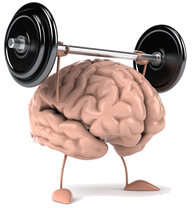
Fitness is great, but if you can boost your brain at the same time then it’s a no-brainer whether to implement HIIT into your weekly routine.
A study by the Montreal Heart Institute completed a four month study on participants. Individuals completed 2 sessions of interval training and 2 sessions of resistance training. They showed that not only did VO2 max increase, but also that their cognitive functions “had greatly improved thanks to the exercise” [10].
VO2 max influences how effectively your body can utilise oxygen to power your body. What isn’t usually considered that the same increase in VO2 max will enhance your body’s ability to send oxygen to the brain.
The result? Boost your lungpower and your brain will benefit too. Best get sprinting before your next test then….
If you’re looking for even more of a mental boost, be sure to add green vegetables to your diet too.
14 – Increases Longevity

One of the key drivers of aging is a reduction in HGH (Human Growth Hormone). This change happens quite quickly once you hit the vibrant age of 30 whereby the body enters a phase called “somatopause”.
This simply means your growth hormones slow down as you get older.
Rather scarily, this decrease in HGH can have a number of undesirable effects. This includes increases in fat (particularly around the waist), a reduction in muscle, reduced energy levels and impaired concentration. It can even result in an unfavourable change in the relationship between “good” and “bad” cholesterol levels [11].
Already feeling like your past your peak? Not to worry the magic of HIIT strikes again. It’s able to give you an increase in growth hormone of over 700% during the HIIT workout and even for hours afterwards [12], [13].
With this much growth hormone flying round your system you can slow down your body’s aging clock. This means that you can physically run away from the grim reaper, if you’re fast enough of course!
According to a presentation at the European Society of Cardiology in its 2012 annual meeting, further benefits of HIIT have also been stated including that HIIT increases “MNC telomerase activity”. MNC telomerase is an anti-aging enzyme (boost your telomerase = slow your aging) [14]. The study also showed that a single workout can activate telomerase in cells. Great news!
So if you’re ever thinking of working out, at least do something and you’ll put your admission into the old people’s home at bay for a little longer.
15 – Improves Fat & Carbohydrate Oxidation
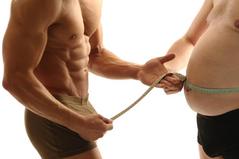
Fat and carbohydrate oxidation (or fat and carbohydrate burning in more simple terms) is a process you want your body to be great at.
There are thousands of calories available in terms of fat on an average person (remembering just one pound of fat is equivalent to 3,500 calories). We want our bodies to be able to tap into this vault of energy as effectively as possible.
We also want to be able to burn the carbohydrates we eat into usable energy as effectively as possible. This helps to power us through our days and our exercise sessions.
Research by the Laval University studied the effect of HIIT on cells’ fat burning and fat minimizing capabilities. They found that HIIT changes muscle fibers, giving them “significantly higher markers for fat oxidation (fat burning)” [15], even when using steady state cardio as a comparison group.
A further study (yes we love studies here at Gainstopia), demonstrated more awesme findings. “18 hours of repeated high-intensity exercise sessions over 6 weeks is a powerful method to increase whole-body and skeletal muscle capacities to oxidize fat and carbohydrate in previously untrained individuals” [16].
Combine this with the after-burn effect mentioned earlier and the facts are clear. HIIT turns your body into a potent fat burning machine.
Best start saving for a new wardrobe collection….
The 7 HIIT Workouts: Things to Bear in Mind..
Science proves that HIIT is incredible, it’s easy to see (and easy to feel when you give it a try). The next question to answer is how to do it effectively.
First it needs to be stated that whichever method you choose from the selection below, all of them will give you the full 15 benefits mentioned above. Some methods will change your body in different ways, for example, if you do HIIT using press ups, you’ll develop a more powerful chest. If you complete HIIT using a cycling machine, you’re more likely to develop incredible legs.
When choosing your HIIT method, feel free to try them all at first to see which one suits you best. But be sure to focus on one over a period of time to make the most of your body’s adaptive process.
For example, if you choose to do a HIIT workout using burpees often, you’ll get better at burpees. This will make you able to work even harder during intervals, burn more calories and benefit from even greater results!
Warming Up
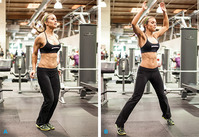
Secondly, an effective warm up comes before any good HIIT routine.
HIIT is, well, intense (Duh). Don’t try to go from 0-100KpH without warming up your engine first.
You can do this simply by completing a minute or two of jumping jacks, or starting off with a longer gentle period before your intense interval. For example, if you’re going to do sprints, consider doing at least 3 minutes of jogging to get your body fully warmed up.
Save the stretching for later, you want your muscles to be warm and ready.
Recovery

Thirdly, after your workout your body will have gone through several intense intervals. You will have worked near 100% of your physical capacities. You’ll want to give your body chance to cool down to begin the recovery process.
For most people this will involve some gentle stretching. This helps to reduce muscle tension, cut the risk of injury and improve posture and flexibility.
If you have one available, you may also wish to incorporate a foam roller. This invokes a massage like effect on the body (or Self-myofascial release for those of you who like more technical terms). This will reduce recovery time, improve blood flow and decrease your risk of injury.
For the more hardcore individuals, you might want to consider an ice bath. They are very easy to set up. Simply buy a cheap pack of ice from your local supermarket and throw 1kg or so of it into a cold bath once run.
The icy cold water causes your blood vessels to tighten and drains the blood out of your legs. When you warm up again, your body gets a rush of “fresh blood”, filled with oxygen.
This process helps drain your body of the lactic acid built up from intense exercise and speeds up the recovery process further.
Training Frequency
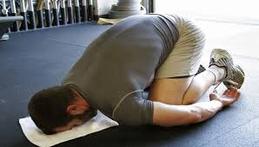
Lastly, with everything in life that’s healthy, more isn’t always better unfortunately. Lifting weights is great, but if you try to do a heavy bench session every day you’re likely to give yourself an injury. You’re likely to end up with reduced performance and reduce the strength of your chest. Realistically all three is likely to happen. Not good.
A similar effect can be observed within HIIT training, as it’s particularly intense, the body needs time and rest to recover.
The absolute maximum recommended number of sessions of HIIT per week is 4, but doing 2-3 will give you more than enough of a health boost. The intensity of HIIT sessions will cause micro-tears in your muscles (don’t worry about the word “tear” it’s a good thing as it’s the way muscles adapt).
So if you plan on doing HIIT every day, these tears and therefore the body won’t have time to adapt and repair itself. This is likely to lead to over-training over time. This means your results plateau, you have greater difficulty sleeping and concentration reduces.
Giving yourself at least 3 days off a week from HIIT (it’s easy to fall in love with the method), should cut the risk of this happening.
If you do feel you’ve been going pretty hard and are worried you’ve not had enough time to recover before your next session, give yourself a day off. Use this as an opportunity to catch up with friends and loved ones. Your athletic performance won’t disappear overnight. On the contrary, it may actually improve once your body is fully recovered.
Interval Timing
The timings of HIIT can be manipulated to suit anyone’s fitness level. It doesn’t matter if you’rer an olympic athlete, or not. Even if your Body Mass Index suggests “could probably eat more in a day than a small elephant”.
There’s a number of different of different schools of thought with regards to interval timing. Some examples include the Tabata method, Little method and Turbulence training.
The Tabata Method is by far the fastest form of HIIT as it only takes up a total of 4 minutes. The structure is to have your intense interval at 20 seconds and rest intervals at 10 seconds. Repeat this for 8 rounds and you’re done (8 rounds x 30 seconds = 4 minutes).
The Little Method takes approximately 27 minutes and comprises an intense interval of 60 seconds with a 75 second lower intensity period.
Turbulence training is slightly different. It involves 8 rep sets with weights, followed by 1-2 minute cardio intervals. For example, 8 reps of bench press, followed by 2 minutes of jumping jacks, before starting with the weights again straight away.
Whichever timing structure you use, Tabata, Little, or any other interval times, they all will work. The key here is intensity. With sufficient intensity, you can easily keep your workout time fairly short. Just be sure to complete 6-10 sets.
This is how you can supercharge your heart & fitness in less than 30 minutes.
HIIT Workout 1 – Running

Equipment Needed –
None (treadmill optional)
Main Muscles Developed –
Legs = Quadriceps (front thighs), Hamstrings (back thighs), Glutes (buttocks) & Calves
Best For (besides all the benefits mentioned) –
As part of any running training plan (from 5ks to marathons) and for any sport that requires you to run (NFL / Basketball / Hockey / Rugby / Football / etc)
Method –
This method can be done anywhere. Whether you’ve been dropped off in the middle of a city whilst travelling, or you’re in the middle of nowhere with only cows for company. There is always a place to run.
If you’re out in the open, simply start off at a very light jog for a minute or two, before breaking into an all out sprint for approximately 30 seconds. (I’d recommend finding a nearby park if you’re in a big city, otherwise you may get a few strange looks from passers by).
Once you’ve completed your first all out sprint, you should be gasping for air ad slightly fatigued (otherwise you’ve not sprinted fast enough!). Give yourself a minute or two of gentle jogging to regain your composure, then do another 30 second sprint.
You may want to consider identifying some nearby landmarks to measure your distance covered during sprinting sessions. Try looking for a nearby bin or a park bench.
Rinse and repeat this process 6-10 times depending on your fitness. If you’ve got a hill nearby this would be a great place to do it. (If you’re in London – Primrose Hill is a personal favorite for hill sprints, the view of London always distracts me from the burning sensation in my legs).
All in all this should give you a great workout in less than 20 minutes, allowing you to carry on with the rest of your day, feel free to take it easy.
Need more of a challenge? – Up your sprint times to 40 seconds whilst reducing your rest times to less than a minute whilst completing a full 10 sprints.
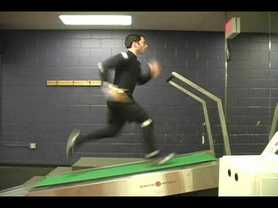
Method –
If you’re on a treadmill, the workout will be different as an all out sprint isn’t possible as quickly as if you’re running out in the open.
Most treadmills have a “speed interval” setting, allowing you to enter in both your jogging speed and sprinting speed.
For example, let’s say your jog speed (the speed at which you can recover fairly easily) is maybe 8KMph and sprint speed is potentially 19KMph. Due to the mechanics of the treadmill, the speed may not reach your sprint speed for maybe 15 seconds or so. Because of this delay, you have two options.
Option a) jump onto the side steps whilst the treadmill speeds up, jumping back on once it is at your desired speed. (not personally recommended as going from stationary to an all out sprint on a fast moving treadmill sounds like a recipe for falling off, injuring yourself and being so embarrassed you have to change gyms).
Option b) simply increase the length of your sprinting portion of your workout to be maybe 50 seconds or 75 seconds. This will ensure you get the sprint duration you need whilst also accounting for the time it takes for the treadmill to adjust its speed.
(This, in my opinion, is preferred as the chances of injury / embarrassment are minimized, you can always jump and straddle the treadmill track when you’re sprinting interval is over).
Need more of a challenge? – Up the incline during your sprint intervals, giving you a greater cardiovascular challenge and developing your thighs and glutes even more.
HIIT Workout 2 – Rowing
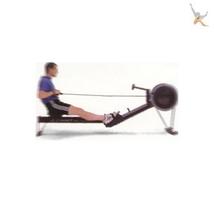
Equipment Needed –
Rowing machine (or an actual rowboat if you have one!)
Main Muscles Developed –
Quads (top of thigh), Hamstrings (back of thigh), Back, Biceps, Rear Shoulders & Core Muscles.
Best For (in addition to all of the benefits mentioned) –
Rowing preparation, muscle development, functional strength, a great back & legs
Method –
This method is simple, just ensure that your form is correct through the motion as follows:
1. Start with your knees bent and your body angled forward with arms extended. Make sure to relax your shoulder and engage your abdominal muscles.
2. Begin the row by pushing off powerfully with your legs. As your legs straighten, your body will open into a wide V.
3. As your legs are just about to reach a straight position, pull the handle with your arms until it reaches your chest.
4. Allow the handle to pull your body forward until your arms are straight again then bend your knees back into the starting position.
5. Repeat! [17]
Now that your form is correct, here’s how to complete HIIT using a rowing machine. Start off with a gentle row, you may even wish to put the resistance down during this period. Do this for roughly 1-2 minutes and get familiar with the motion.
After warming up it’s time for a 30 second row as fast as you can (whilst maintaining correct form). Whilst completing your intense interval section, ensure that the resistance is at the maximum setting.
Once you’ve done 30 seconds or so of rowing as fast as you can, it’s time for a 1-2 minute rest. Feel free to lower the resistance and row at a gentle pace to catch your breath. After you’ve rested, it’s time for another 30 seconds of mind blowing intensity.
Rinse and repeat this process for 6-10 rounds, 2-3 times a week and you’ll be showing your local rowing team how it’s done before you know it.
Need more of a challenge? – Keep the resistance at maximum throughout the workout and up your sprint times to 45 seconds whilst reducing your rest times to less than a minute. In addition aim to complete a full 10 sprints.
HIIT Workout 3 – Cycling
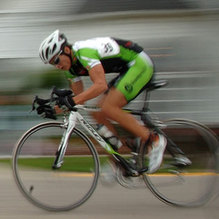
Equipment Needed –
Bicycle or static cycling machine
Main Muscles Developed –
Legs (Quadriceps, Hamstrings & Calves)
Best For (in addition to all of the benefits mentioned) –
Developing amazing legs, as part of triathlon training, for any cycling based event or race.
Method –
If you’re on a bicycle this will be different to using a machine. Make sure you’ve got plenty of space. You don’t want to have to turn a corner or avoid pedestrians when cycling at full speed!
An unused path in a large park is best here. Attempting to cycle super fast in a city environment is neither safe nor clever. You’ll become a danger not only to yourself, but also to those around you.
Now that we’ve got the health and safety lesson out of the way, you want to begin cycling gently around your chosen area for a couple of minutes. Then (once you have sufficient space in front of you) begin cycling incredibly hard with your gears on the hardest setting as if you’re going for first place in the Tour de France.
Your legs should be on fire (metaphorically – stop drop and roll if you’ve actually caught fire somehow). After a 30-40 second sprint resume your gentle cycling and catch your breath for 1-2 minutes.
Repeat this process for 6-10 intervals, 2-3 times per week to give you the best set of legs you’ve ever had.
Need more of a challenge? – Find a nearby incline to do your sprints on. If you’re feeling extra tough, find a nearby hill to get your legs pumping.
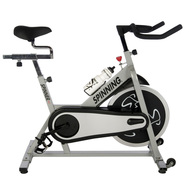
Method –
If your on a static cycling machine found at the gym, you can manipulate the resistance on the machine at any time.
Begin gently with the resistance fairly low for 1-2 minutes. After which it’s time to up the intensity. Crank up the resistance on the bike and pedal forward as fast as you can.
Your machine should also give you some useful information such as speed or calories burnt per hour. Use this to benchmark your intensity, keeping above a specific speed or number of calories burnt per hour.
After you’ve pedaled as fast as you can for 30-40 seconds, give yourself a breather and reduce the resistance. Pedal gently again for 1-2 minutes. Rinse & repeat this ‘cycle’ between six and ten times, 2-3 times a week.
Need more of a challenge? – Up the resistance, as your on a machine. You should always be able to up the resistance to ensure you’re challenged throughout the sprint sections of the workout.
HIIT Workout 4 – Swimming
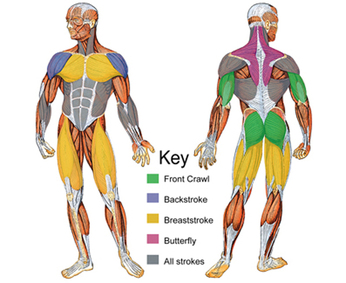
Equipment Needed –
Water (goggles optional)
Main Muscles Developed –
Entire body (different stroke types will work different muscle groups, for more detail, see the image below)
Best For (besides all the benefits mentioned) –
Developing total body muscle and in preparation for any upcoming swimming event.
Method –
Whether you’re in open water or in the local swimming pool, the structure of your workout will be similar.
If you’re in a swimming pool, you start by swimming a couple of lengths in your chosen stroke at an easy pace. After a couple of laps, complete a length going as fast as you possibly can.
It may help to check the clock on the wall (if there is one) to try to consistently beat your time.
As always, allow yourself a couple of laps to catch your breath. Once you’re ready complete another length at top speed.
Need more of a challenge? – Rather than completing 1 length at top speed, increase your high intensity interval to 2 lengths. Additionally you may wish to use hand paddles to increase the force per arm movement.
Ensure you’re sprint intervals are no more than a minute and a half long. The key here is intensity intervals rather than trying to last as long as possible.

Method –
If you’re in open waters, swim along at a casual pace for 1-2 minutes. Then, swim as fast as physically possible for 30-40 seconds. If it helps, imagine a great white shark behind you in the water – your only chance at survival is swimming away! (this is the type of intensity you need!).
Once you’ve completed the high intensity section, swim gently for another couple of minutes. Caught your breath? Time to swim as fast as you can again!
When in open waters don’t swim too far from shore unless you’re particularly confident. The idea of this workout is to drain your energy quickly. If you’re not an incredible swimmer, don’t go alone an far away from the land. You’re asking for trouble.
Need more of a challenge? – Simply increase the duration of your sprint interval whilst reducing your rest interval.
HIIT Workout 5 – Burpees
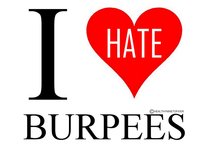
Equipment Needed –
None
Main Muscles Developed –
The entire body
Best For (in addition to all of the benefits mentioned) –
Building an agile physique & whole body definition
Method –
Burpees are one of the most talked about exercises in the fitness world. They are loved and hated by military participants and athletes alike. It’s a very demanding exercise that works your entire body.
To perform a burpee check out the how-to below or check out the video to the right.
(There is a basic version of a burpee without the push-up element, but this is HIIT, not “take it easy-land”):
| Stand straight, then lower into a squat position with your hands on the floor in front of you.Kick your feet back into a push-up position and immediately drop your chest to the floor.Bow your chest up as you return your feet back to the squat position as fast as possible.Jump up into the air as high as you can.Clap your hands above your head and repeat. |
The great benefit about using burpees for a HIIT workout is that is requires barely any space, no equipment and is extremely effective.
To create a whole workout from burpees, simply complete as many burpees as possible in 45 seconds. Then give yourself a minute to grab a quick drink of water and catch your breath.
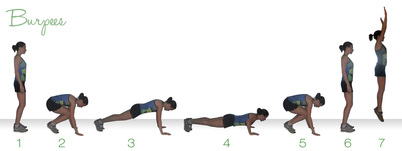
During the second high intensity interval (i.e. the next 45 second period of all out burpees) your goal should be to try and meet or exceed the amount of burpees you completed in your first 45 seconds.
Carry this on till you’ve completed at least 6 sets of burpees. Record how many you completed. Give yourself a pat on the back, then use this number as your target to beat for next time. The more you do, the more you’ll love them. It’s like some sort of crazy variation of Stockholm syndrome.
Need more of a challenge? – (first of all, that’s impressive) If you want to make this harder, increase the duration of your intense interval and reduce the time of your rest interval or carry hand-weights whilst you complete the exercise.
But if you’re really desperate for even more burpees, try the “prison burpee workout” whereby you start with a set of 20 burpees, then 19 burpees, then all the way down to 1 with as little rest as possible.
HIIT Workout 6 – Blood Switching
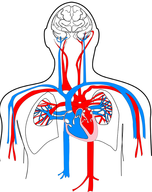
Equipment Needed –
Equipment optional (pull up bar / box)
Main Muscles Developed –
Full body (a selection of exercises available)
Best For (in addition to all of the benefits mentioned) –
Developing functional strength, building muscle
Method –
With whatever equipment is available. If you want to go equipment free, there’s a variety of options available to give you a great full body workout.
Combining an upper body exercise with a lower body exercise during alternative high intensity intervals will give you the best results due to a phenomenon we like to call “blood switching”.
Blood switching just refers to alternating between sets of upper and lower body exercises. This means that your blood switches from one hemisphere of the body to the other. So whilst you’re doing press ups, your legs will be allowed to take a breather from the squats you did earlier.
Blood switching, or alternating between upper and lower body exercises produces high levels of lactate, burns lots of calories and ultimately improves recovery and performance further [18].
To set up your blood switching HIIT circuit, simply pick 1 upper body exercise and 1 lower body exercise from the selection below. For the best results make sure you incorporate compound exercises into your sessions.
| Upper Body Exercises Pull Ups Press Ups Bodyweight Row Military Press etc. | Lower Body Exercises Squats Squat Jumps Box Jumps Plyometric (jumping) Lunges etc. |
Any upper body or lower body exercises can really be used in this circuit. However, it’s best to use minimal equipment as it ensures the changeover from resting to high intensity will be as fluid as possible. This reduces the risk of doing a few pulls ups, then running over to the bench, grabbing a pair of dumbbells lying back beginning to bench press.
An ideal combination would be Box Jumps and Press Ups or Pull Ups and Plyometric Lunges.
If you do want to use equipment, use the same piece of equipment for both your exercises. For example if you want to use a barbell, you could do barbell squats combined with bent over rows. If you wanted to use dumbbells you could do a standing shoulder press combined with lunges.
For the workout itself, begin by completing as many explosive repetitions of your upper body exercise as you can in 45 seconds. Then give yourself 45 seconds rest before completing as many explosive repetitions of your lower body exercise as you can in 45 seconds.
The switching of your blood from upper to lower body should enable your body to endure more. Doing all of your lower body exercises followed by all of your upper body exercises leads to an increase in workout volume. This means even greater results, no needles necessary.
Need more of a challenge? – Go weighted – consider wearing a weighted vest or holding dumbbells during your exercises.
HIIT Workout 7 – Kettlebell Frenzy
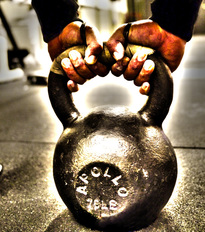
Equipment Needed –
Kettlebells (of course)
Main Muscles Developed –
Full Body
Best For (besides all the benefits mentioned) –
Developing total body muscle and functional strength and stability.
Method –
Kettlebells were the weapon of choice for Russian lifters of times-gone-by. They are ball shaped weights with thick handles where the weight is positioned away from the handle itself. They challenge your grip and your core simultaneously. Think of them as dumbbells with attitude.
To create your own HIIT Kettlebell workout, simply grab a kettlebell and pick any 3 exercises from below (or any other kettlebell exercises you fancy).
Complete as many reps as possible of your first exercise in a 45 second period. Rest for 30-90 seconds. Then complete as many reps as possible for your second exercise in a 45 second period. Rest for 30-90 seconds. Finally comple as many reps as possible for your third exercise.
Utilising alternative muscles used in each exercise you should also benefit from blood switching again (where by certain muscles can recover whilst other muscles are being used).
Potential Kettlebell Exercises
| Goblet Squat Weighted Lunge Kettlebell Swing | Kettlebell Row Kettlebell Figure-8 (between your legs) Military Press | High Pull Russian Twist Kettlebell Deadlift |
With the versatility of kettlebells the list is almost endless. Simply pick 3 exercises (ideally using different muscles). Go into a frenzy for 9 rounds in total (3 of each). Then watch yourself develop a physique a Russian athlete would be proud of.
Need more of a challenge? – Simply pick up heavier kettlebells!
Conclusion
So there we are, your ultimate guide to HIIT workouts and supercharging your heart and fitness in less than 30 mintues, including 15 reasons to do HIIT and at least 7 ways to try it. Give a few of them to try and tell us what your favorite is.
Have any friends who don’t know about the magic of HIIT yet? Share this article on Facebook and spread the knowledge! 🙂
Have any more questions? We’d love to hear from you, leave a comment below and we’ll get back to you!
References:
[1] The higher the better? Interval training intensity in coronary heart disease – http://www.sciencedirect.com/science/article/pii/S1440244013001539[2] Short-term Sprint Interval versus Traditional Endurance Training: Similar initial adaptations in human skeletal muscle and exercise performance – http://onlinelibrary.wiley.com/doi/10.1113/jphysiol.2006.112094/abstract?maxtoshow=&HITS=10&hits=10&RESULTFORMAT=&author1=Gibala&andorexacttitle=and&andorexacttitleabs=and&andorexactfulltext=and&searchid=1&FIRSTINDEX=0&sortspec=relevance&resource
[3] HIIT Workout: What it is and Why it Works – http://dailyburn.com/life/fitness/high-intensity-hiit-workout/
[4] The Top Five Benefits of HIIT – http://healthyliving.azcentral.com/top-five-benefits-hiit-5446.html
[5] All About High Intensity Interval Training (HIIT) – http://www.precisionnutrition.com/all-about-hiit
[6] HIIT – High Intensity Interval Training For Maximum Fat Loss – http://www.coachcalorie.com/hiit-training/
[7] The Effect of a Brief Sprint Interval Exercise on Growth Factors and Inflammatory Mediators – http://www.ncbi.nlm.nih.gov/pubmed/19057403
[8] Is Running 26.2 Miles Necessary Before Racing The Marathon? – http://running.competitor.com/2014/08/training/is-26-2-miles-necessary-before-the-marathon_46463/3
[9] Reaction of resting heart rate and blood pressure to high intensity interval and modern continuous training in coronary artery diseases – http://bjsm.bmj.com/content/44/Suppl_1/i20.2.abstract
[10] Montreal Study: Sport makes middle-aged people smarter – https://www.icm-mhi.org/en/montreal-study-sport-makes-middle-aged-people-smarter
[11] Adult growth hormone deficiency – http://www.yourhormones.info/endocrine_conditions/adult_growth_hormone_deficiency.aspx
[12] HIIT It Hard for Your HGH Boost – http://www.garmaonhealth.com/hiit-hard-hgh-boost/
[13] MASH Up Conditioning – http://www.mashupconditioning.com/
[14] High-intensity Interval Training Activates Telomerase and Reduces p53 expression – http://spo.escardio.org/eslides/view.aspx?eevtid=54&fp=5229
[15] Fit with HIIT: Science Is Dropping The Hammer On Endless Bouts Of Steady-State Cardio – http://www.simplyshredded.com/fit-with-hiit-science-is-dropping-the-hammer-on-endless-bouts-of-steady-state-cardio.html
[16] High-intensity aerobic interval training increases fat and carbohydrate metabolic capacities in human skeletal muscle – http://www.ncbi.nlm.nih.gov/pubmed/19088769
[17] The Most Undervalued Piece of Equipment in the Gym – http://www.sparkpeople.com/resource/fitness_articles.asp?id=663&page=3
[18] Upper / Lower Circuit Training – https://www.t-nation.com/training/upper-lower-circuit-training

